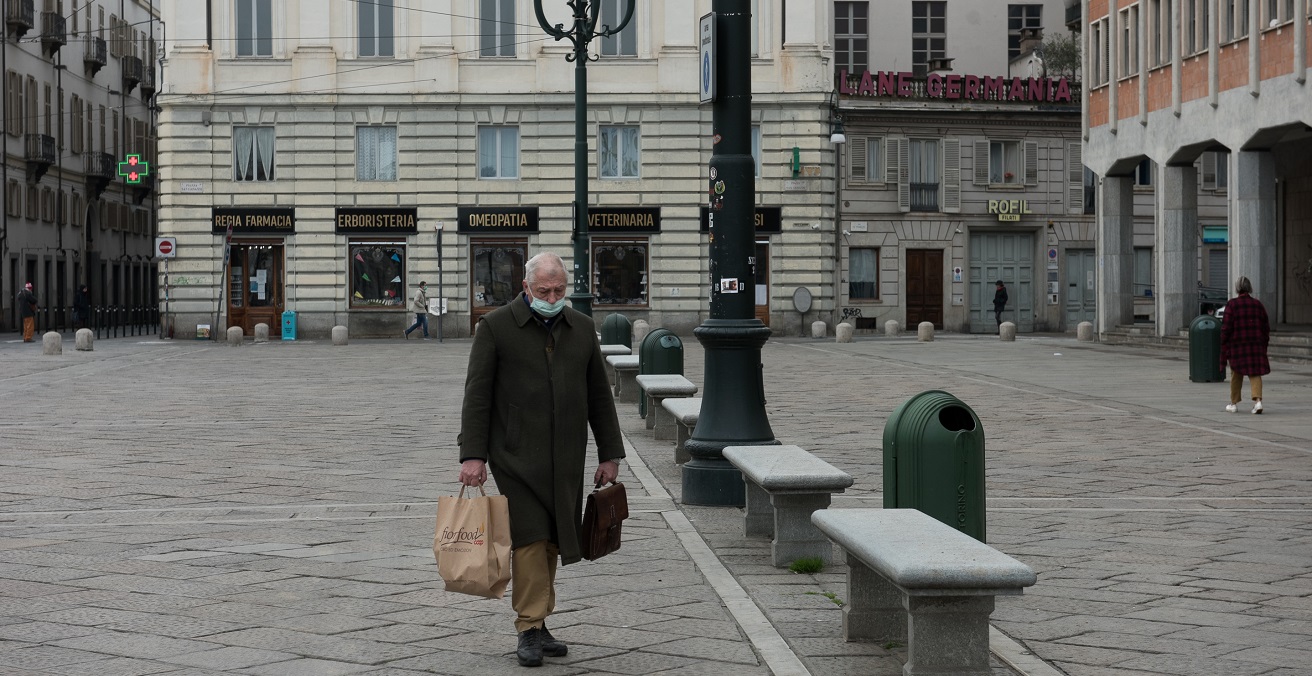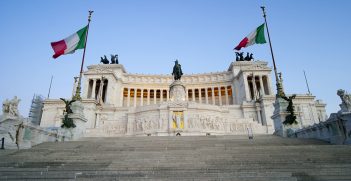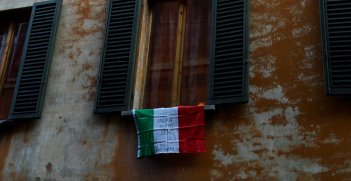Dispelling Italy's Migrant Myth

Although overseas arrivals precipitated Italy’s second lockdown, migrants arriving from Africa and the Middle East are not super spreaders of COVID-19. It is unfortunate, yet not surprising, that populist leaders have capitalised on the pandemic to further anti-immigration sentiment in an already divided country.
In August 2020, president of Sicily and leader of the regional conservative Diventerà Bellissima Party, Nello Musumeci, closed all migrant reception centres in Sicily, citing concerns of containing and isolating COVID-19 cases. Musumeci’s directive was swiftly met with opposition from the Italian government, which claimed he did not have jurisdiction over what was a central government prerogative. A court later ruled in favour of the Italian government, overturning Musumeci’s order.
But not all politicians were opposed to Musumeci, with some publicly announcing their support for his policy. In a Twitter post, former Minister for the Interior Matteo Salvini praised Musumeci’s hard-line approach not only to containing the virus, but also to protecting Italy against “an invasion of clandestine immigrants.” Salvini himself received global condemnation last year after he closed Italian ports to returning non-governmental organisation ships which had undertaken migrant search-and-rescue missions in the Mediterranean Sea. He is now facing trial on charges of abuse of power.
Musumeci and the Italian government’s spat echoes growing concerns of how populist leaders are using the pandemic to exacerbate enduring tensions between Italian nationals and its significant migrant population. The perennial Mediterranean immigration crisis, instigated by the Arab Spring protests that began in 2010, has been a major source of people movement in Africa and the Middle East. Since 2014, almost 700,000 migrants have crossed the Mediterranean Sea and arrived on Italy’s southern shores, many fleeing from civil unrest, persecution, the effects of climate change, and forced labour.
The influx of migrants has polarised nationals on the issue of how Italy should respond to the crisis, reflected in the inconclusive results of the 2018 general elections. Two months after the elections were held, a joint parliament was formed between the centre-right Lega Nord and the anti-establishment Movimento Cinque Stelle. Both parties are defined by their strong anti-immigration rhetoric.
The sudden rise of COVID-19 cases in the beginning of August brought scathing critiques of Italy’s migration policies by populist leaders. In a speech to the Chamber of Deputies in August 2020, Giorgia Meloni, leader of the conservative Fratelli d’Italia party chastised the Italian government for being “conniving” and letting in “infected immigrants.” She demanded the government close all ports to incoming migrant boats, so the “sacrifices made by Italians to avoid spreading the disease” were not made in vain. It was a policy not dissimilar to Salvini’s.
Of course, some fears of arriving migrants spreading coronavirus in Italy were and are genuine, as managing the influx of migrants in the face of the pandemic has proven to be a complex challenge for the Italian government. Over 32,000 migrants have arrived in Italy by sea this year, almost triple the number of arrivals in 2019. The journey many migrants attempt across the Mediterranean is characterised by harsh weather conditions, poor sanitation, and overcrowded boats, an ideal environment for COVID-19 and other diseases to spread. The pandemic has also shone a light on the inadequate living conditions and neglect in migrant reception centres, such as overcrowding and difficulties in accessing legal and mental health support.
To comply with COVID-19 safety measures, many reception centres have been forced to reduce capacity drastically, putting greater pressure on an already fatigued government dealing with the pandemic. A controversial policy was implemented in April this year for transporting migrants and asylum seekers who tested positive for COVID-19 to “quarantine ships” at Italian ports until they recover. These ships have been condemned by human rights advocates, lawyers, and migrant activists as “discriminatory and without legal basis.”
However, the widespread belief that incoming migrants from Africa and the Middle East are the root cause of Italy’s COVID-19 crisis is a tragic misperception. A report by the Institute for International Political Studies found that during Italy’s first outbreak from March to the beginning of July, less than 100 migrants who had arrived by sea tested positive for coronavirus, accounting for 1.5 percent of total migrant arrivals. The situation worsened in August, when an outbreak in a migrant centre in Treviso lead to the infection of 257 housed migrants in one week. Though there has been a considerable increase in migrant cases since July, this number is unparalleled to the 13,000 active cases in Italy at this time, most of which are situated in major cities.
In the face of Italy’s second lockdown, it is true that a large portion of Italy’s COVID-19 cases had been imported from overseas. But despite what populist leaders have tried to champion, arriving migrants from Africa and the Middle East are not Italy’s biggest challenge to suppressing the virus. In an interview with Italy’s Corriere Della Sera, the president of Italy’s Higher Health Council, Franco Locatelli, told the newspaper that up to 40 percent of new cases in July and August were actually attributed to Italian nationals returning from overseas vacation during the summer holidays. Cases imported by migrants, he went on to say, had a “minimal” impact on rising cases, with as little as 3 percent of new cases being connected to migrant centre outbreaks.
Not unlike many countries dealing with outbreaks, the youth are at the centre of spreading the virus in major cities. Those attending nightclubs and bars have become super spreaders of the virus as they interact in larger crowds, defy social distancing protocols, and lack masks. Even as cases began to rise, the government’s reluctance to reimpose restrictions in major cities was a key contributor to Italy’s second-wave crisis. The government closed down nightclubs on 17 August as Italy reached 15,000 active cases. However, bars, restaurants, and the rest of Italy’s nightlife were still open until 25 October, with active cases surpassing 222,200 at the time.
Italy has been devastated by the pandemic, amassing over 61,000 deaths since the crisis began. Especially for a country economically dependent on international tourists, hopes of returning to a post-COVID-19 “normality” are slim. To other countries battling the pandemic, Italy’s situation highlights the toxicity of division and the need to surmount individual temptations. Restrictions on migrants may seem reasonable on the surface, but in reality, they are reflective of a growing trend of populism across Europe against migration and migrant communities. Only through a united response to the crisis, focusing on the real super spreaders, can Italy overcome the virus.
Cahill Di Donato is studying a Bachelor of International Relations/Asian Studies at the Australian National University. His research interests are migration politics in southern Europe, and the Strategic Culture paradigm in China. Cahill is currently an intern at the AIIA National Office.
This article is published under a Creative Commons Licence and may be republished with attribution.





